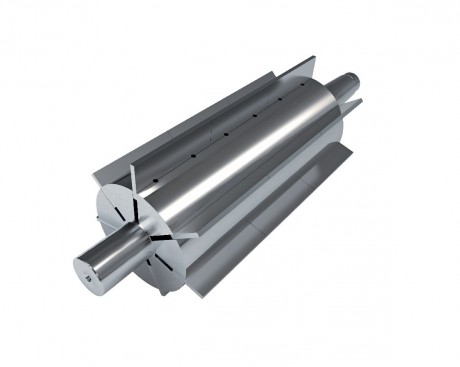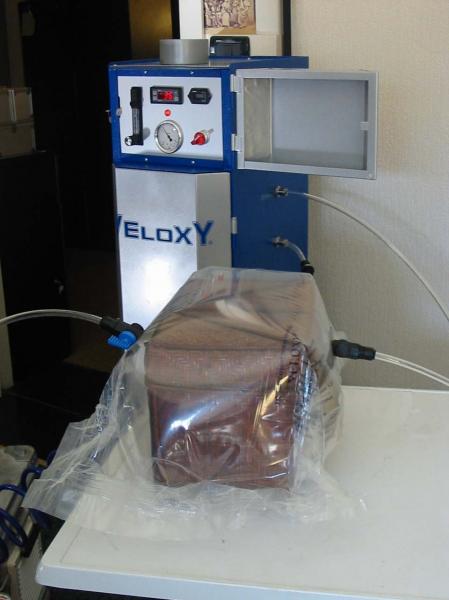RGI bioSteryl Tech chose Mattei ERC compressor for its technology of naturally disinfesting works of art.
The Italian company RGI bioSteryl Tech Srl (in Genoa) developed an innovative disinfesting and disinfecting system based on anoxia, which has enjoyed worldwide success in the cultural heritage property field: during the re-engineering phase of the machine, the Mattei ERC was chosen to supply the air necessary for the process.
RGI bioSteryl Tech Srl is an engineering company specialised in innovative technologies for safeguarding and preserving Cultural Heritage properties. With offices in Genoa, the company operates on the world market thanks to the disinfesting and disinfecting systems it offers that are unique for their characteristics and performances.
RGI bio Steryl Tech’s current core business began to develop in 1994 when the former company R.G.I. (Resource Group Integrator) created a series of solutions specifically for the museum and archive fields. At the end of the 1999s, the first prototype of a machine revolutionary for its field was developed that was able to totally eliminate pests from works of art naturally, by simply eliminating air and without using other substances. It is extraordinarily innovative as it does not threaten the objects themselves, but also because it protects the environment and people’s health, avoiding the use of insecticides.
The rest of RGI bioSteryl Tech’s history is very recent but abounding with important references: in 2011, the former R.G.I. acquired a new corporate structure and was reinforced in terms of finance and organisation. Immediately afterwards, a total re-engineering of the machine was designed and carried out. The new system is even more efficient, reliable and precise in its results; of the old system, the operating system and name, VELOXY (VEryLOwOXYgen), were kept.
A simple principle applied in a unique manner
VELOXY arose from a simple intuition: removing oxygen, the gas that is essential for the survival of pests, it creates a lethal condition for all the species and development stages of the pests, from egg, larva, chrysalis, and finally adulthood.
Disinfesting an object requires that it be exposed to air that is free of, or with very low concentrations, oxygen for a sufficient amount of time. The same principle was already applied in the food industry for preserving foods in «modified atmospheres» for longer periods of time: in order to transfer it to the Cultural Heritage properties field, a suitable system had to be created: that is, one able to obtain more pronounced anoxic levels.
Thus, the VELOXY System was developed, which is able to obtain pure nitrogen from the environmental air, introducing it under a special gas-proof plastic film: this creates an atmosphere that is oxygen-free inside the airtight enclosure where the work of art to be disinfested must remain for at least 22 days.
The advantages of this innovative solution are evident in terms of ecology and health: no toxic substances are employed, only the air found in the environment which is properly treated; this ensures that works of art are fully respected, that they are not treated with harmful substances or undergo potentially damaging treatments, such as thermal ones. The success of VELOXY is also linked to other system features: its 100% guaranteed efficiency, the machine’s light weight, which makes it easy to transport, eliminating the need to move works of art; its flexibility in use, making it ideal for treating small or large objects or even entire shelves of books contemporaneously; the possibility that personnel working in museums, libraries and archives, after simple usage training, can use it directly.

VELOXY and Mattei, together for maximum efficiency
During the machine’s re-engineering process, which concluded with the launching of the new VELOXY system, RGI bioSteryl Tech had been searching for a new supplier of compressed air: «Our goal was to improve reliability in time and, thanks to Mattei, we were able to achieve this, all the while improving our system ‘s performance even more,» explained Marco Piras, Engineering Manager for RGI bioSteryl Tech. «The compressor played a fundamental role in our solution, as it supplied the bundles of fibres that separate oxygen from the atmospheric air and contributed to the realisation of an environment with a very high concentration of nitrogen.
«For this reason, during the machine improvement phase, we decided to replace the previous compressor with a new one,» continued Marco Piras. «We were thinking of an operating technology that would ensure reliability even for prolonged use and which required little maintenance, able to operate with constant temperatures and low oil consumption. Mattei’s rotary vanes turned out to be the most suitable. After an initial phase of Web research, we met an agent in our company who let us try out the compressor we were interested in for a while: the results immediately proved we had made the right decision. Today all VELOXY systems, whether the 500 or 1000 version, are equipped with a Mattei ERC 1-S compressor».
The VELOXY system today is known and appreciated throughout the world: it was recently purchased by the Hermitage Museum in Saint Petersburg, and can also be found in the British Library, in many natural history museums (Stockholm, Toronto, Vienna), in the Quirinal Palace, at the Royal Library in Rabat, Morocco. VELOXY was used to disinfest the Giotto Crucifix, the first edition of the Encyclopaedia edited by Diderot and D’Alembert, icons from the Panteleimnos monastery on Mount Athos, the National Library of St. Marks in Venice, and many other treasured works of art.

The Mattei ERC 1-S compressor
The ERC 1.5 – 3 kW series compressors are part of the Mattei Classic rotary vane compressor range: the compressors are complete with air cooler, separator and automatic condensation discharger, able to deliver impurity-free air and keep management and maintenance costs low.
Equipped with single-phase or three-phase asynchronous electric motor, ERC compressors operate with modulated continuous function mode. The control board has an IP55 protection rating for operating efficiently even in dusty and humid areas; the electro-mechanical control panel is equipped with a start and stop switch and a thermal protective device.
The motor-compressor transmission is achieved by direct elastic coupling. The integrated cooling group has 2 aluminium radiators: one for cooling oil and the other for cooling compressed air. The air cooler is also equipped with a condensation separator and automatic discharger. Oil separation takes place in several phases with a coalescent filter compressor-motor group is mounted on a sturdy base provided with supporting feet.
The ERC 1-S, fitted with a single-phase asynchronous electric motor, delivers compressed air with a pressure of 10 bar and a rated output of 1.5 kW; its maximum capacity is 0.16 m3/min, and requires a voltage of 230 V.



